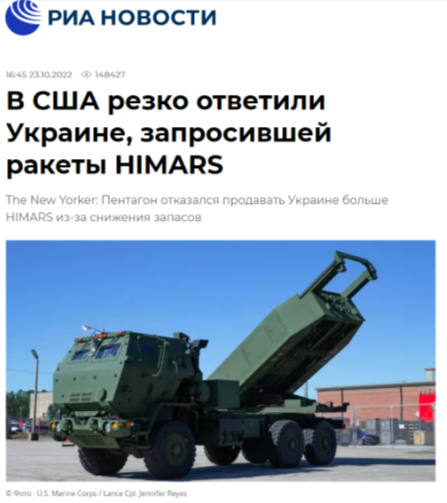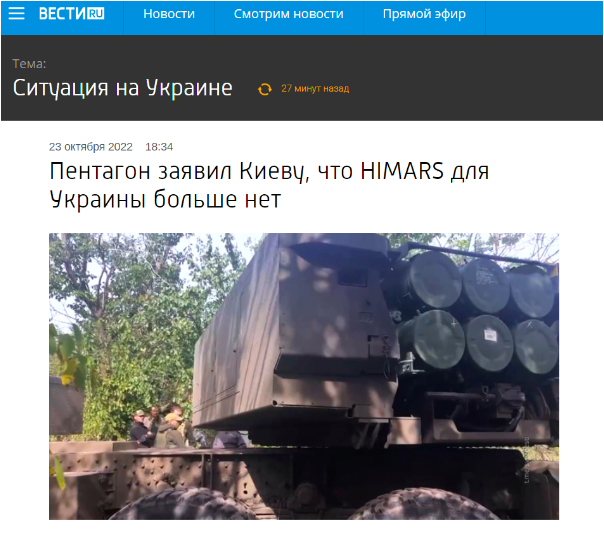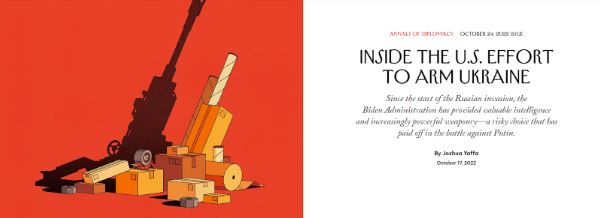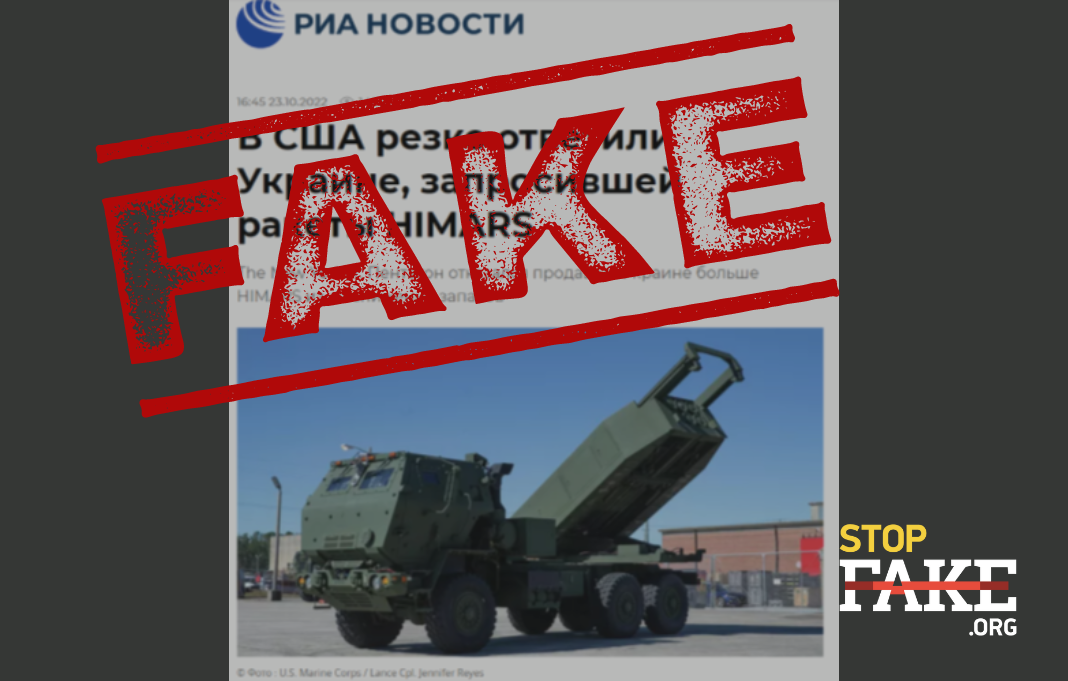The U.S. Defense Department has officially announced that it will deliver 18 HIMARS as part of the next Ukraine aid package. A Pentagon source assured the New Yorker magazine that Ukraine would receive “more weapons of greater sophistication and at larger scale.”
The claim that “the US responded harshly to Ukraine” requesting additional HIMARS systems is another Kremlin fake. Russian propaganda once again resorted to one of its tried and true methods, misrepresenting the content of a legitimate news story, this time, a New Yorker article. In fact, a US Defense Department spokesman said that Ukraine could not be supplied with many additional HIMARS systems ” … not because we don’t trust you but because there simply isn’t an unlimited quantity of these on planet Earth.”
Kremlin propagandists interpreted this as a “denial and a harsh response.” The fake story was spread across major propaganda media outlets, such as RIA Novosti, Life, Vzglyad, Izvestia, 360, Krasnaya Vesna, OSN, and others.

Vesti went even further and created a fake with the headline “Pentagon told Kyiv that HIMARS for Ukraine is finished.”

This propaganda statement is easily disproved by the official announcement by the U.S. Defense Department that the United States will deliver “18 High Mobility Artillery Rocket Systems, along with associated ammunition,” to Ukraine as part of a new $1.1 billion security assistance package.
The New Yorker Inside the U.S. Effort to Arm Ukraine article describes developments in Ukraine over the past year, particularly the successes of the Ukrainian army and the efforts of Western partners leading to those successes.

Kremlin propagandists took only two paragraphs from the New Yorker article and based their crude fake on them. The article says that one HIMARS MLRS costs about $7 million. The system can use two types of weapons to strike the enemy. GMRLS rockets with a range of about 60 km or ATACMS surface-to-surface ballistic missiles with a range of about 300 km.
New Yorker author Joshua Yaffa writes that Ukraine could use more than 5,000 GMLRS missiles per month, while their manufacturer Lockheed Martin produces only 9,000 per year.
“We said straightaway, ‘You’re not going to get very many of these systems,’ … ‘Not because we don’t trust you but because there simply isn’t an unlimited quantity of these on planet Earth.’” the Defense Department said.
The number of HIMARS and their ammunition is limited by the production capacities of defense companies. However, this is not a “sharp U.S. response” meaning that “there are no HIMARS for Ukraine,” as the Russian propaganda claims.

RIA Novosti propagandists proved with their fake headline that “the U.S. responded harshly to Ukraine requesting HIMARS missiles” that they do not know what they are trying to lie about. Because the phrase “requested HIMARS missiles” is a meaningless set of words. HIMARS is not a missile, but a launcher, on a vehicle chassis. To put it simply, it is a truck, and not a missile.
HIMARS fires two types of ammunition at enemy targets – GMRLS and ATACMS. GMRLS are not missiles, but rockets. Ukraine has been receiving them since June 2022. ATACMS, on the other hand, are ground-to-ground missiles. There is no official confirmation that Ukraine has received them.
The propagandists’ claim that Ukraine is “denied” HIMARS is incomprehensible, because in this fake they have mixed up the MLRS, rocket launchers and surface-to-surface missiles.
According to the Ukrainian Ministry of Defense, the Ukrainian army has more than 20 HIMARS and similar systems in service.

The New Yorker confirms this amount and writes that “the U.S. had provided a total of sixteen launchers; Germany and the United Kingdom had given nine similar systems.”
Citing U.S. Defense Department officials, the New Yorker article states that the volume of weapons shipments to Ukraine will only increase. “As we have gotten deeper into the conflict, we realized we could provide more weapons of greater sophistication and at greater scale without provoking a Russian military response against NATO … In that scenario, Russia was the frog, and we boiled the water slowly, and Russia got used to it,” the official said.





